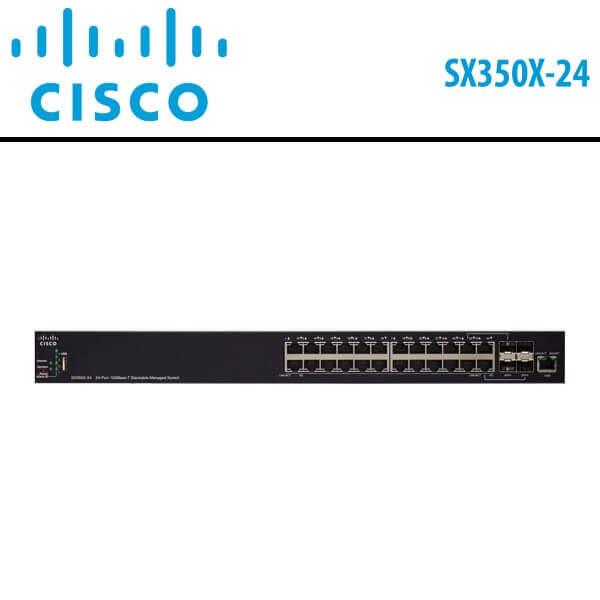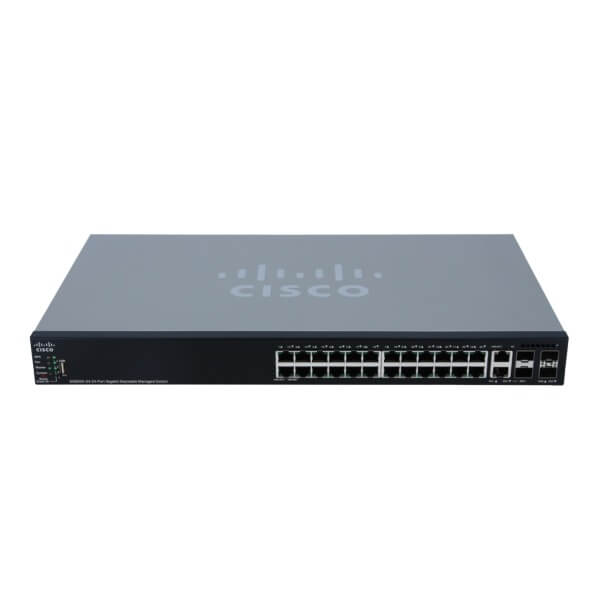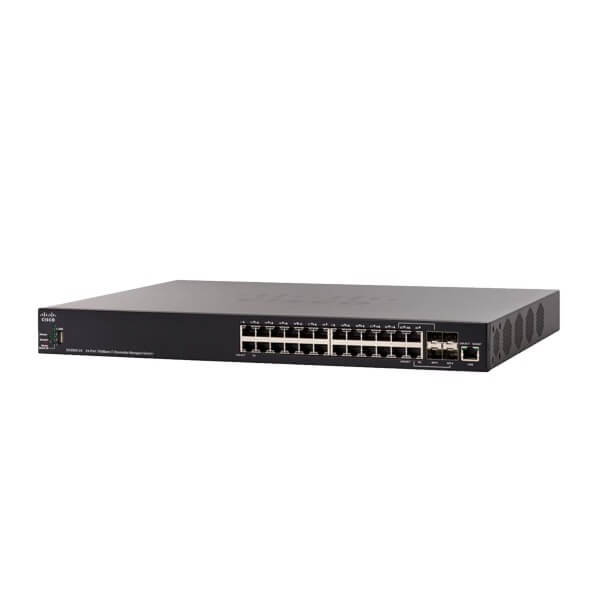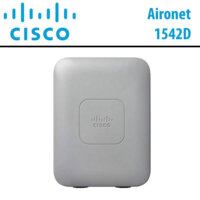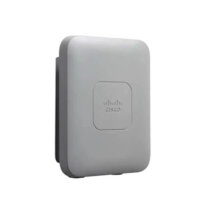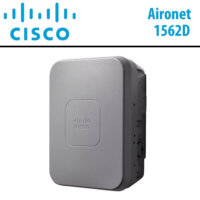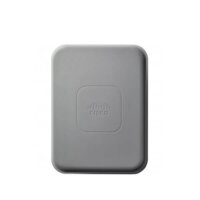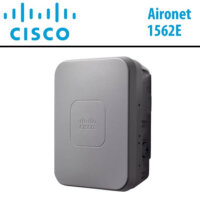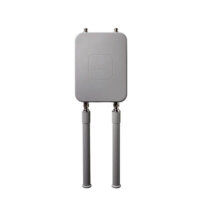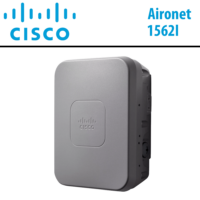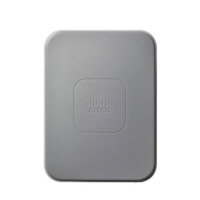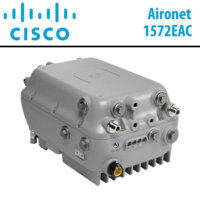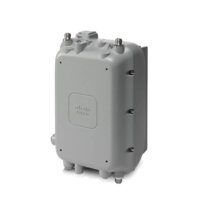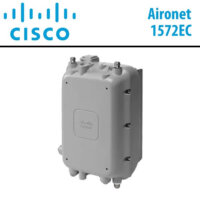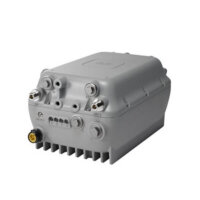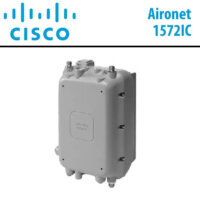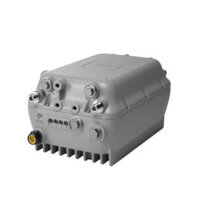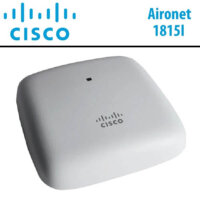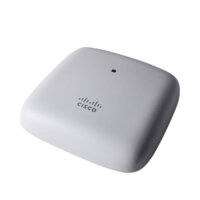Description
Cisco SX350X-24 Dubai
The Cisco SX350X-24 Dubai offers an optimal technological foundation for the growth of your business. Specifically designed to safeguard your technology investments, this Cisco SX350X-24 switch ensures adaptability and scalability as your business expands. Its true stack feature combines a unified data and control plane, along with a management plane, enhancing flexibility, scalability, and user-friendliness by treating the stack of units as a cohesive entity.
Distinguishing itself from switches that merely claim to be stackable but manage and troubleshoot elements separately, the Cisco SX350X-24 Dubai switch provides genuine stacking capability. This enables you to effortlessly configure, manage, and troubleshoot multiple physical switches as a single device, facilitating the seamless expansion of your network. Additionally, the Cisco SX350X-24 switch safeguards your technology investment through an enhanced warranty, dedicated technical support, and the option to upgrade equipment in the future.
Features
High-Performance 10 Gigabit Ethernet
Cisco SX350X-24 Dubai switch breaks the barrier of 10 Gigabit Ethernet adoption by providing affordable and powerful features of for growing small and medium businesses networks. With the 10-Gigabit ports, in both copper and fiber, you can easily and cost-effectively enable 10G connections to servers and network storage devices with standard RJ45 Ethernet cable. You can also aggregate 10G SFP+ fiber connections to build a high-performance backbone to dramatically increase the overall speed of your network.
Multigigabit Performance
Cisco’s Multigigabit Ethernet switches offer just that: an easy-to-deploy, budget-friendly solution that allows you to increase network speed and bandwidth using your existing cables. By partnering with other industry leaders to form the NBASE-T Alliance, Cisco uses NBASE-T technology to help you get more out of your existing infrastructure. Save time and money by avoiding upgrades and extending the life of your installed cable plants. And discover the benefits of meeting consumer demand for increased bandwidth and speeds without a large initial investment.
Multigigabit Ethernet technology uses capabilities in your existing cabling infrastructure to meet bandwidth requirements and provide up to five times the performance. The technology enables intermediate data rates of 2.5 and 5 Gbps to ease the jump between traditional rates of 1 Gbps and 10 Gbps. These intermediate rates run on most installed cables and preserve older UTP wiring, which is good for 802.11ac wireless LAN applications. The technology also supports Power over Ethernet (PoE) forms, including PoE+ and 60W PoE. Cisco Multigigabit Ethernet switches help you avoid having to run multiple cables between switches and access points and let your networks welcome next-generation traffic speeds and data rates.
Simple configuration and management
Cisco SX350X-24 Dubai is designed to be easy to use and manage by small business customers or the partners that serve them. Smart Network Application (SNA) is an innovative network-level monitoring and management tool embedded in the Cisco 100 to 500 Series switches. It can discover network topology, display link status, monitor events, apply configurations, and upgrade software images across multiple switches in the network.
- The FindIT Network Manager and Probe are designed to manage Cisco 100 to 500 Series switches, routers, and wireless access points. They let you proactively manage the network instead of just reacting to events. Cisco 250 Series switches support the embedded FindIT Network Probe, eliminating the need to set up a separate hardware or virtual machine on site.
- The FindIT Network Discovery Utility works through a simple toolbar on the user’s web browser to discover Cisco devices on the network and display basic device information, inventory, and new firmware updates to aid in the configuration and speed the deployment of Cisco Small Business products. Simple or advanced-mode graphic user interfaces reduce the time required to deploy, troubleshoot, and manage the network. Configuration wizards simplify the most common configuration tasks and provide the ultimate tool for anyone to set up and manage the network.
- Cisco Smartports technology provides more advanced capabilities and hands-on control by automatically configuring ports with specific levels of security, QoS, and availability according to the type of connected device, based on Cisco best practices and pretested configurations. The Auto Smartports feature automatically applies the intelligence delivered through the Smartports roles to the port based on the device types discovered over Cisco Discovery Protocol or LLDP-MED. This capability facilitates zero-touch deployments.
Power over Ethernet Plus (PoE+) and 60W PoE
PoE technology simplifies the deployment of IP phones and wireless access points by allowing you to connect and power network endpoints over a single Ethernet cable, without having to install separate power supplies. The 350X Series switches support 15W Power over Ethernet (PoE) and 30W Power over Ethernet Plus (PoE+). The switches also support 60W PoE on selected ports to power compact switches, high-power wireless access points, or connected lighting. The PoE power is intelligently managed in a way such that only the amount of power needed by endpoints is delivered to it and not wasted. As a result, the switches can support devices that require more power, such as 802.11ac wireless access points, video-based IP phones, surveillance cameras, and more. The PoE features in Cisco SX350X-24 Dubai is also fully backward compatible with 802.3af PoE, 802.3at PoE+, and Cisco legacy PoE protocols.
High Reliability and Resiliency
In a growing business where availability 24 hours a day, 7 days a week is critical, you need to assure that employees can always access the data and resources they need. In these environments, stackable switches can play an important role in eliminating downtime and improving network resiliency. For example, if a switch within a Cisco 350X Series stack fails, another switch immediately takes over, keeping your network up and running. You can also replace individual devices in the stack without taking your network offline or affecting employee productivity. The Cisco SX350X-24 Dubai also supports dual images, allowing you to perform software upgrades without having to take the network offline or worry about the network going down during the upgrade.
Simplified IT Operation
Cisco SX350X-24 Dubai helps optimize your IT operations with built-in features that simplify and streamline day-to-day network operation:
- True stacking allows you to troubleshoot, configure, and manage multiple physical switches as a single entity.
- Cisco switches use common chipsets/software across all switching portfolios, so all Cisco switches within a category support the same feature set, making it easier to manage and support all switches across the network.
True Stacking
With true stack capabilities Cisco SX350X-24 Dubai switch, delivers a unified data and control plane, in addition to management plane, providing flexibility, scalability, and ease of use because the stack of units operates as a single entity constituting all the ports of the stack members. This capability can radically reduce complexity in a growing network environment while improving the resiliency and availability of network applications. True stacking also provides other cost savings and administrative benefits through features such as cross-stack QoS, VLANs, LAGs, and port mirroring, which clustered switches can’t support.
Strong Security
Cisco SX350X-24 Dubai provides the advanced security features you need to protect your business data and keep unauthorized users off the network:
- Embedded Secure Sockets Layer (SSL) encryption protects management data traveling to and from the switch.
- Extensive access control lists (ACLs) restrict sensitive portions of the network to keep out unauthorized users and guard against network attacks.
- Guest VLANs let you provide Internet connectivity to nonemployee users while isolating critical business services from guest traffic.
- Support for advanced network security applications such as IEEE 802.1X port security tightly limits access to specific segments of your network. Web-based authentication provides a consistent interface to authenticate all types of host devices and operating systems, without the complexity of deploying IEEE 802.1X clients on each endpoint.
- Advanced defense mechanisms, including dynamic Address Resolution Protocol (ARP) inspection, IP Source Guard, and Dynamic Host Configuration Protocol (DHCP) snooping, detect and block deliberate network attacks. Combinations of these protocols are also referred to as IP-MAC port binding (IPMB).
- IPv6 First Hop Security extends the advanced threat protection to IPv6. This comprehensive security suite includes ND inspection, RA guard, DHCPv6 guard, and neighbor binding integrity check, providing unparalleled protection against a vast range of address spoofing and man-in-the-middle attacks on IPv6 networks.
- Time-based ACLs and port operation restrict access to the network during pre-designated times such as business hours.
- Uniform MAC address-based security can be applied automatically to mobile users as they roam between wireless access points.
- Secure Core Technology (SCT) helps ensure that the switch is able to process management traffic in the face of a denial-of-service (DoS) attack.
- Private VLAN Edge (PVE) provides Layer 2 isolation between devices on the same VLAN.
- Storm control can be applied to broadcast, multicast, and unknown unicast traffic.
- Protection of management sessions occurs using RADIUS, TACACS+, and local database authentication as well as secure management sessions over SSL, SSH, and SNMPv3.
- DoS attack prevention maximizes network uptime in the presence of an attack.
IPv6 Support
As the IP address scheme evolves to accommodate a growing number of network devices, the Cisco 350X Series can support the transition to the next generation of networking and operating systems such as Windows 7, Vista, and Linux. These switches continue to support previous-generation IPv4, allowing you to evolve to the new IPv6 standard at your own pace, and helping ensure that your current network will continue to support your business applications in the future. Cisco 350X Series switches have successfully completed rigorous IPv6 testing and have received the USGv6 and IPv6 Gold certification.
Advanced Layer 3 Traffic Management
The Cisco SX350X-24 Dubai enables a more advanced set of traffic management capabilities to help growing businesses organize their networks more effectively and efficiently. The switch provides static LAN Layer 3 routing, allowing you to segment your network into workgroups and communicate across VLANs without degrading application performance. With these capabilities, you can boost the efficiency of your network by offloading internal traffic-handling tasks from your router and allowing it to manage primarily external traffic and security. You can minimize the need to manually configure routing devices and simplify the ongoing operation of the network.
Power Efficiency
The Cisco SX350X-24 Dubai integrates a variety of power-saving features across all models, providing the industry’s most extensive energy-efficient switching portfolio. The Cisco SX350X-24 Dubai is designed to conserve energy by optimizing power use, which helps protects the environment and reduce your energy costs. They provide an eco-friendly network solution without compromising performance. Cisco 350X Series switches feature:
- Support for the Energy Efficient Ethernet (IEEE 802.3az) standard, which reduces energy consumption by monitoring the amount of traffic on an active link and putting the link into a sleep state during quiet periods
- The latest application-specific integrated circuits (ASICs), which use low-power 65/40-nanometer technology and low-power, high-performance ARM CPUs
- Automatic power shutoff on ports when a link is down
- LEDs that can be turned off to save power
- Embedded intelligence to adjust signal strength based on the length of the connecting cable
Networkwide Automatic Voice Deployment
Using a combination of Cisco Discovery Protocol, LLDP-MED, Auto Smartports, and Voice Services Discovery Protocol (or VSDP, a unique Cisco protocol), customers can deploy an end-to-end voice network dynamically. The switches in the network automatically converge around a single voice VLAN and QoS parameters and then propagate them out to the phones on the ports, where they are discovered. For example, automated voice VLAN capabilities let you plug any IP phone (including third-party phones) into your IP telephony network and receive an immediate dial tone. The switch automatically configures the device with the right VLAN and QoS parameters to prioritize voice traffic.
Peace of Mind and Investment Protection
Cisco SX350X-24 Dubai switch offer the reliable performance and peace of mind you expect from a Cisco switch. When you invest in the Cisco 350 Series, you gain the benefit of:
- Limited lifetime warranty with next-business-day (NBD) advance replacement (where available; otherwise same day ship)
- A solution that has been rigorously tested to help ensure optimal network uptime to keep employees connected to primary resources and productive
- A solution designed and tested to easily and fully integrate with other Cisco voice, unified communications, security, and networking products, as part of a comprehensive technology platform for your business
Specifications
| Performance | ||||
| Switching capacity and forwarding rate All switches are wire-speed and non-blocking |
Product Name | Capacity in mpps (64-byte packets) |
Switching Capacity (Gbps) | |
| SG350X-8PMD | 29.76 | 80 | ||
| SG350X-24 | 95.23 | 128 | ||
| SG350X-24P | 95.23 | 128 | ||
| SG350X-24MP | 95.23 | 128 | ||
| SG350X-24PD | 104.16 | 140 | ||
| SG350X-48 | 130.94 | 176 | ||
| SG350X-48P | 130.94 | 176 | ||
| SG350X-48MP | 130.94 | 176 | ||
| SG350XG-2F10 | 178.56 | 240 | ||
| SG350XG-24F | 357.12 | 480 | ||
| SG350XG-24T | 357.12 | 480 | ||
| SG350XG-48T | 714.24 | 960 | ||
| SX350X-08 | 119.05 | 160 | ||
| SX350X-12 | 178.56 | 240 | ||
| SX350X-24F | 357.12 | 480 | ||
| SX350X-24 | 357.12 | 480 | ||
| SX350X-52 | 755.81 | 1040 | ||
| Layer 2 Switching | ||||
| Spanning Tree Protocol | Standard 802.1d spanning tree support
Fast convergence using 802.1w (Rapid Spanning Tree [RSTP]), enabled by default Multiple spanning tree instances using 802.1s (MSTP); 16 instances are supported |
|||
| Port grouping/link aggregation | Support for IEEE 802.3ad Link Aggregation Control Protocol (LACP)
Up to 8 groups Up to 8 ports per group with 16 candidate ports for each (dynamic) 802.3ad LAG |
|||
| VLAN | Support for up to 4094 active VLANs simultaneously; port-based and 802.1Q tag-based VLANs; MAC-based VLAN
Management VLAN Private VLAN with promiscuous, isolated, and community port Guest VLAN, unauthenticated VLAN, protocol-based VLAN, subnet-based VLAN, CPE VLAN Dynamic VLAN assignment using RADIUS server along with 802.1x client authentication |
|||
| Voice VLAN | Voice traffic is automatically assigned to a voice-specific VLAN and treated with appropriate levels of QoS. Auto voice capabilities deliver network-wide zero touch deployment of voice endpoints and call control devices. | |||
| Multicast TV VLAN | Multicast TV VLAN allows the single multicast VLAN to be shared in the network while subscribers remain in separate VLANs. This feature is also known as Multicast VLAN Registration (MVR). | |||
| Q-in-Q | VLANs transparently cross over a service provider network while isolating traffic among customers. | |||
| GVRP/GARP | Generic VLAN Registration Protocol (GVRP) and Generic Attribute Registration Protocol (GARP) enable automatic propagation and configuration of VLANs in a bridged domain. | |||
| Unidirectional Link Detection (UDLD) | UDLD monitors physical connection to detect unidirectional links caused by incorrect wiring or port faults to prevent forwarding loops and blackholing of traffic in switched networks. | |||
| DHCP Relay at Layer 2 | Relay of DHCP traffic to DHCP server in a different VLAN. Works with DHCP Option 82. | |||
| IGMP (versions 1, 2, and 3) snooping | Internet Group Management Protocol (IGMP) limits bandwidth-intensive multicast traffic to only the requesters; supports 4K multicast groups (source-specific multicasting is also supported). | |||
| IGMP querier | IGMP querier is used to support a Layer 2 multicast domain of snooping switches in the absence of a multicast router. | |||
| HOL blocking | Head-of-line (HOL) blocking. | |||
| Layer 3 | ||||
| IPv4 routing | Wirespeed routing of IPv4 packets
Up to 128 static routes and up to 128 IP interfaces |
|||
| Wirespeed IPv6 Static Routing | Up to 4K static routes and up to 200 IPv6 interfaces | |||
| Layer 3 interface | Configuration of Layer 3 interface on physical port, LAG, VLAN interface, or loopback interface | |||
| CIDR | Support for Classless Inter-Domain Routing | |||
| VRRP | Virtual Router Redundancy Protocol (VRRP) delivers improved availability in a Layer 3 network by providing redundancy of the default gateway servicing hosts on the network. VRRP versions 2 and 3 are supported. Up to 255 virtual routers are supported. | |||
| DHCP server | Switch functions as an IPv4 DHCP server serving IP addresses for multiple DHCP pools/scopes
Support for DHCP options |
|||
| DHCP Relay at Layer 3 | Relay of DHCP traffic across IP domains. | |||
| User Datagram Protocol (UDP) Relay | Relay of broadcast information across Layer 3 domains for application discovery or relaying of BOOTP/DHCP packets. | |||
| Stacking | ||||
| Hardware stack | Up to 4 units in a stack. Up to 208 ports managed as a single system with hardware failover | |||
| High availability | Fast stack failover delivers minimal traffic loss. Support link aggregation across multiple units in a stack. | |||
| Plug-and-play stacking configuration/management | Master/backup for resilient stack control
Autonumbering Hot swap of units in stack Ring and chain stacking options, auto-stacking port speed, flexible stacking port options |
|||
| High-speed stack interconnects | Cost-effective high-speed 10G fiber and copper interfaces. Support LAG as stacking interconnects for even higher bandwidth. | |||
| Security | ||||
| SSH | Secure Shell (SSH) Protocol secures Telnet traffic to and from the switch. SSH versions 1 and 2 are supported. | |||
| SSL | Secure Sockets Layer (SSL) encrypts all HTTPS traffic, allowing secure access to the browser-based management GUI in the switch. | |||
| IEEE 802.1X (Authenticator role) | RADIUS authentication and accounting, MD5 hash, guest VLAN, unauthenticated VLAN, single/multiple host mode, and single/multiple sessions.
Supports time-based 802.1X dynamic VLAN assignment. |
|||
| Web-based authentication | Web-based authentication provides network admission control through web browser to any host devices and operating systems. | |||
| STP BPDU Guard | A security mechanism to protect the networks from invalid configurations. A port enabled for Bridge Protocol Data Unit (BPDU) Guard is shut down if a BPDU message is received on that port. This avoids accidental topology loops. | |||
| STP Root Guard | This prevents edge devices not in the network administrator’s control from becoming Spanning Tree Protocol root nodes. | |||
| DHCP snooping | Filters out DHCP messages with unregistered IP addresses and/or from unexpected or untrusted interfaces. This prevents rogue devices from behaving as a DHCP server. | |||
| IP Source Guard (IPSG) | When IP Source Guard is enabled at a port, the switch filters out IP packets received from the port if the source IP addresses of the packets have not been statically configured or dynamically learned from DHCP snooping. This prevents IP address spoofing. | |||
| Dynamic ARP Inspection (DAI) | The switch discards ARP packets from a port if there are no static or dynamic IP/MAC bindings or if there is a discrepancy between the source or destination address in the ARP packet. This prevents man-in-the-middle attacks. | |||
| IP/MAC/Port Binding (IPMB) | The preceding features (DHCP Snooping, IP Source Guard, and Dynamic ARP Inspection) work together to prevent DoS attacks in the network, thereby increasing network availability. | |||
| Secure Core Technology (SCT) | Makes sure that the switch will receive and process management and protocol traffic no matter how much traffic is received. | |||
| Secure Sensitive Data (SSD) | A mechanism to manage sensitive data (such as passwords, keys, and so on) securely on the switch, populating this data to other devices, and secure autoconfig. Access to view the sensitive data as plaintext or encrypted is provided according to the user-configured access level and the access method of the user. | |||
| Private VLAN | Private VLAN provides security and isolation between switch ports, which helps ensure that users cannot snoop on other users’ traffic; supports multiple uplinks. | |||
| Port security | Ability to lock source MAC addresses to ports and limit the number of learned MAC addresses. | |||
| RADIUS/TACACS+ | Supports RADIUS and TACACS authentication. Switch functions as a client. | |||
| RADIUS accounting | The RADIUS accounting functions allow data to be sent at the start and end of services, indicating the amount of resources (such as time, packets, bytes, and so on) used during the session. | |||
| Storm control | Broadcast, multicast, and unknown unicast. | |||
| DoS prevention | Denial-of-service (DoS) attack prevention. | |||
| Multiple user privilege levels in CLI | Levels 1, 7, and 15 privilege levels. | |||
| ACLs | Support for up to 2K entries.
Drop or rate limit based on source and destination MAC, VLAN ID or IP address, protocol, port, DSCP/IP precedence, TCP/User Datagram Protocol (UDP) source and destination ports, 802.1p priority, Ethernet type, Internet Control Message Protocol (ICMP) packets, Internet Group Management Protocol (IGMP) packets, TCP flag. Time-based ACLs supported. |
|||
| Quality of Service | ||||
| Priority levels | 8 hardware queues | |||
| Scheduling | Strict Priority and weighted round-robin (WRR) | |||
| Class of service | Port based; 802.1p VLAN priority based; IPv4/v6 IP precedence/ToS/DSCP based; DiffServ; classification and remarking ACLs, trusted QoS
Queue assignment based on differentiated services code point (DSCP) and class of service (802.1p/CoS) |
|||
| Rate limiting | Ingress policer; egress shaping and ingress rate control; per VLAN, per port, and flow based | |||
| Congestion avoidance | A TCP congestion avoidance algorithm is required to minimize and prevent global TCP loss synchronization. | |||
| Standards | ||||
| Standards | IEEE 802.3 10BASE-T Ethernet, IEEE 802.3u 100BASE-TX Fast Ethernet, IEEE 802.3ab 1000BASE-T Gigabit Ethernet, IEEE 802.3ad Link Aggregation Control Protocol, IEEE 802.3z Gigabit Ethernet, IEEE 802.3ae 10 Gbit/s Ethernet over fiber for LAN, IEEE 802.3an 10GBase-T 10 Gbit/s Ethernet over copper twisted pair cable, IEEE 802.3x Flow Control, IEEE 802.1D (STP, GARP, and GVRP), IEEE 802.1Q/p VLAN, IEEE 802.1w Rapid STP, IEEE 802.1s Multiple STP, IEEE 802.1X Port Access Authentication, IEEE 802.3af, IEEE 802.3at, IEEE 802.1AB Link Layer Discovery Protocol, IEEE 802.3az Energy Efficient Ethernet, RFC 768, RFC 783, RFC 791, RFC 792, RFC 793, RFC 813, RFC 826, RFC 879, RFC 896, RFC 854, RFC 855, RFC 856, RFC 858, RFC 894, RFC 919, RFC 920, RFC 922, RFC 950, RFC 951, RFC 1042, RFC 1071, RFC 1123, RFC 1141, RFC 1155, RFC 1157, RFC 1213, RFC 1215, RFC 1286, RFC 1350, RFC 1442, RFC 1451, RFC 1493, RFC 1533, RFC 1541, RFC 1542, RFC 1573, RFC 1624, RFC 1643, RFC 1700, RFC 1757, RFC 1867, RFC 1907, RFC 2011, RFC 2012, RFC 2013, RFC 2030, RFC 2131, RFC 2132, RFC 2233, RFC 2576, RFC 2616, RFC 2618, RFC 2665, RFC 2666, RFC 2674, RFC 2737, RFC 2819, RFC 2863, RFC 3164, RFC 3176, RFC 3411, RFC 3412, RFC 3413, RFC 3414, RFC 3415, RFC 3416, RFC 4330 | |||
| IPv6 | ||||
| IPv6 | IPv6 host mode IPv6 over Ethernet dual IPv6/IPv4 stack
IPv6 Neighbor and Router Discovery (ND), IPv6 Stateless Address Autoconfiguration, path MTU Discovery Duplicate Address Detection (DAD) ICMPv6 IPv6 over IPv4 network with ISATAP tunnel support USGv6 and IPv6 Gold Logo certified |
|||
| IPv6 QoS | Prioritize IPv6 packets in hardware | |||
| IPv6 ACL | Drop or Rate Limit IPv6 packets in hardware | |||
| IPv6 First Hop Security | RA guard
ND inspection DHCPv6 guard Neighbor binding table (snooping and static entries) Neighbor binding integrity check |
|||
| Multicast Listener Discovery (MLD v1/2) snooping | Deliver IPv6 multicast packets only to the required receivers | |||
| IPv6 applications | Web/SSL, Telnet Server/SSH, Ping, Traceroute, SNTP, TFTP, SNMP, RADIUS, Syslog, DNS client, DHCP Client, DHCP Autoconfig, IPv6 DHCP Relay, TACACS | |||
| IPv6 RFC supported | RFC 4443 (which obsoletes RFC 2463) – ICMPv6
RFC 4291 (which obsoletes RFC 3513) – IPv6 Address Architecture RFC 4291 – IP Version 6 Addressing Architecture RFC 2460 – IPv6 Specification RFC 4861 (which obsoletes RFC 2461) – Neighbor Discovery for IPv6 RFC 4862 (which obsoletes RFC 2462) – IPv6 Stateless Address Auto-configuration RFC 1981 – Path MTU Discovery RFC 4007 – IPv6 Scoped Address Architecture RFC 3484 – Default address selection mechanism RFC 5214 (which obsoletes RFC 4214) – ISATAP tunneling RFC 4293 – MIB IPv6: Textual Conventions and General Group RFC 3595 – Textual Conventions for IPv6 Flow Label |
|||
| Management | ||||
| Web user interface | Built-in switch configuration utility for easy browser-based device configuration (HTTP/HTTPS). Supports simple and advanced mode, configuration, wizards, customizable dashboard, system maintenance, monitoring, online help, and universal search. | |||
| SNMP | SNMP versions 1, 2c, and 3 with support for traps, and SNMP v3 User-based Security Model (USM) | |||
| Standard MIBs | lldp-MIB
lldpextdot1-MIB lldpextdot3-MIB lldpextmed-MIB rfc2674-MIB rfc2575-MIB rfc2573-MIB rfc2233-MIB rfc2013-MIB rfc2012-MIB rfc2011-MIB RFC-1212 RFC-1215 SNMPv2-CONF SNMPv2-TC p-bridge-MIB q-bridge-MIB rfc1389-MIB rfc1493-MIB rfc1611-MIB rfc1612-MIB rfc1850-MIB rfc1907-MIB rfc2571-MIB rfc2572-MIB rfc2574-MIB rfc2576-MIB rfc2613-MIB |
rfc2665-MIB
rfc2668-MIB rfc2737-MIB rfc3621-MIB rfc4668-MIB rfc4670-MIB trunk-MIB tunnel-MIB udp-MIB draft-ietf-bridge-8021x-MIB draft-ietf-bridge-rstpmib-04-MIB draft-ietf-hubmib-etherif-mib-v3-00-MIB ianaaddrfamnumbers-MIB ianaifty-MIB ianaprot-MIB inet-address-MIB ip-forward-MIB ip-MIB RFC1155-SMI RFC1213-MIB SNMPv2-MIB SNMPv2-SMI SNMPv2-TM RMON-MIB rfc1724-MIB dcb-raj-DCBX-MIB-1108-MIB rfc1213-MIB rfc1757-MIB |
||
| Private MIBs | CISCOSB-lldp-MIB
CISCOSB-brgmulticast-MIB CISCOSB-bridgemibobjects-MIB CISCOSB-bonjour-MIB CISCOSB-dhcpcl-MIB CISCOSB-MIB CISCOSB-wrandomtaildrop-MIB CISCOSB-traceroute-MIB CISCOSB-telnet-MIB CISCOSB-stormctrl-MIB CISCOSBssh-MIB CISCOSB-socket-MIB CISCOSB-sntp-MIB CISCOSB-smon-MIB CISCOSB-phy-MIB CISCOSB-multisessionterminal-MIB CISCOSB-mri-MIB CISCOSB-jumboframes-MIB CISCOSB-gvrp-MIB CISCOSB-endofmib-MIB CISCOSB-dot1x-MIB CISCOSB-deviceparams-MIB CISCOSB-cli-MIB CISCOSB-cdb-MIB CISCOSB-brgmacswitch-MIB CISCOSB-3sw2swtables-MIB CISCOSB-smartPorts-MIB CISCOSB-tbi-MIB CISCOSB-macbaseprio-MIB CISCOSB-env_mib-MIB CISCOSB-policy-MIB CISCOSB-sensor-MIB CISCOSB-aaa-MIB CISCOSB-application-MIB CISCOSB-bridgesecurity-MIB CISCOSB-copy-MIB CISCOSB-CpuCounters-MIB CISCOSB-Custom1BonjourService-MIB CISCOSB-dhcp-MIB CISCOSB-dlf-MIB CISCOSB-dnscl-MIB CISCOSB-embweb-MIB CISCOSB-fft-MIB CISCOSB-file-MIB CISCOSB-greeneth-MIB CISCOSB-interfaces-MIB CISCOSB-interfaces_recovery-MIB CISCOSB-ip-MIB |
CISCOSB-iprouter-MIB
CISCOSB-ipv6-MIB CISCOSB-mnginf-MIB CISCOSB-lcli-MIB CISCOSB localization-MIB CISCOSB-mcmngr-MIB CISCOSB-mng-MIB CISCOSB-physdescription-MIB CISCOSB-PoE-MIB CISCOSB-protectedport-MIB CISCOSB-rmon-MIB CISCOSB-rs232-MIB CISCOSB-SecuritySuite-MIB CISCOSB-snmp-MIB CISCOSB-specialbpdu-MIB CISCOSB-banner-MIB CISCOSB-syslog-MIB CISCOSB-TcpSession-MIB CISCOSB-traps-MIB CISCOSB-trunk-MIB CISCOSB-tuning-MIB CISCOSB-tunnel-MIB CISCOSB-udp-MIB CISCOSB-vlan-MIB CISCOSB-ipstdacl-MIB CISCOSB-eee-MIB CISCOSB-ssl-MIB CISCOSB-digitalkeymanage-MIB CISCOSB-qosclimib-MIB CISCOSB-vrrp-MIB CISCOSB-tbp-MIB CISCOSB-stack-MIB CISCOSMB-MIB CISCOSB-secsd-MIB CISCOSB-draft-ietf-entmib-sensor-MIB CISCOSB-draft-ietf-syslog-device-MIB CISCOSB-rfc2925-MIB CISCOSB-vrrpv3-MIB CISCO-SMI-MIB CISCOSB-DebugCapabilities-MIB CISCOSB-CDP-MIB CISCOSB-vlanVoice-MIB CISCOSB-EVENTS-MIB CISCOSB-sysmng-MIB CISCOSB-sct-MIB CISCO-TC-MIB CISCO-VTP-MIB CISCO-CDP-MIB |
||
| RMON | Embedded RMON software agent supports 4 RMON groups (history, statistics, alarms, and events) for enhanced traffic management, monitoring, and analysis | |||
| IPv4 and IPv6 Dual Stack | Coexistence of both protocol stacks to ease migration | |||
| Firmware upgrade | Web browser upgrade (HTTP/HTTPS) and TFTP and SCP
Upgrade can be initiated through console port as well Dual images for resilient firmware upgrades |
|||
| Port mirroring | Traffic on a port can be mirrored to another port for analysis with a network analyzer or RMON probe. Up to 8 source ports can be mirrored to one destination port. | |||
| VLAN mirroring | Traffic from a VLAN can be mirrored to a port for analysis with a network analyzer or RMON probe. Up to 8 source VLANs can be mirrored to one destination port. | |||
| Flow-based redirection and mirroring | Redirect or mirror traffic to a destination port or mirroring session based on flow. | |||
| Remote switch port analyzer (RSPAN) | Traffic can be mirrored across Layer 2 domain to a remote port on a different switch for easier troubleshooting. | |||
| sFlow agent | Switch can export sFlow sample to external collectors. sFlow provides visibility into network traffic down to flow level. | |||
| DHCP (Options 12, 66, 67, 82, 129, and 150) | DHCP options facilitate tighter control from a central point (DHCP Server), to obtain IP address, auto configuration (with configuration file download), DHCP Relay, and host name. | |||
| Auto configuration with Secure Copy (SCP) file download | Enables secure mass deployment with protection of sensitive data. | |||
| Text-editable configs | Config files can be edited with a text editor and downloaded to another switch, facilitating easier mass deployment. | |||
| Smartports | Simplified configuration of QoS and security capabilities. | |||
| Auto Smartports | Automatically applies the intelligence delivered through the Smartports roles to the port based on the devices discovered over Cisco Discovery Protocol or LLDP-MED. This facilitates zero touch deployments. | |||
| Secure Copy (SCP) | Securely transfer files to and from the switch. | |||
| Textview CLI | Scriptable CLI. A full CLI as well as a menu CLI is supported. | |||
| Cloud Services | Support for Cisco Active Advisor | |||
| Localization | Localization of GUI and documentation into multiple languages. | |||
| Login banner | Configurable login banners for web as well as CLI. | |||
| Time-based port operation | Link up or down based on user-defined schedule (when the port is administratively up). | |||
| Other management | Traceroute; single IP management; HTTP/HTTPS; SSH; RADIUS; port mirroring; TFTP upgrade; DHCP client; BOOTP; Simple Network Time Protocol (SNTP); Xmodem upgrade; cable diagnostics; Ping; syslog; Telnet client (SSH secure support); Automatic time settings from Management Station. | |||
| Green (Power Efficiency) | ||||
| Energy Detect | Automatically turns power off on RJ-45 port when detecting link down. Active mode is resumed without loss of any packets when the switch detects the link is up. | |||
| Cable length detection | Adjusts the signal strength based on the cable length. Reduces the power consumption for shorter cables. | |||
| EEE compliant (802.3az) | Supports IEEE 802.3az on all Gigabit copper ports. | |||
| Disable port LEDs | LEDs can be manually turned off to save on energy. | |||
| General | ||||
| Jumbo frames | Frame sizes up to 9K bytes. The default MTU is 2K. | |||
| MAC table | 64K addresses. | |||
| Discovery | ||||
| Bonjour | The switch advertises itself using the Bonjour protocol. | |||
| LLDP (802.1ab) with LLDP-MED extensions | Link Layer Discovery Protocol (LLDP) allows the switch to advertise its identification, configuration, and capabilities to neighboring devices that store the data in a MIB. LLDP-MED is an enhancement to LLDP that adds the extensions needed for IP phones. | |||
| Cisco Discovery Protocol (CDP) | The switch advertises itself using the Cisco Discovery Protocol. It also learns the connected device and its characteristics using Cisco Discovery Protocol. | |||
| Power over Ethernet | ||||
| The following switches support 802.3at PoE+, 802.3af PoE, and Cisco pre-standard (legacy) PoE on any of the RJ45 network ports. 60W PoE is also supported on selected RJ-45 network ports Maximum power of 60W is delivered to any of the 60W PoE ports, and maximum power of 30W is delivered to any of the other RJ45 network ports, until the PoE budget for the switch is reached The total power available for PoE per switch is as follows |
||||
| Model | Power Dedicated to PoE | Number of Ports That Support PoE | ||
| SG350X-8PMD | 240W | 8 (4 support 60W PoE) | ||
| SG350X-24P | 195W | 24 (4 support 60W PoE) | ||
| SG350X-24MP | 382W | 24 (4 support 60W PoE) | ||
| SG350X-24PD | 375W | 24 (4 support 60W PoE) | ||
| SG350X-48P | 382W | 48 (8 support 60W PoE) | ||
| SG350X-48MP | 740W | 24 (8 support 60W PoE) | ||
| Power consumption (worst case) | ||||
| Model Name | Green Power (mode) | System Power Consumption | Power Consumption (with PoE) | Heat Dissipation (BTU/hr) |
| SG350X-8PMD | EEE, Energy Detect, Short Reach | 110V=32.5W 220V=32.5W |
N/A | 1065.3 |
| SG350X-24 | EEE, Energy Detect, Short Reach | 110V=32.5W 220V=32.5W |
N/A | 83.39 |
| SG350X-24P | EEE, Energy Detect, Short Reach | 110V=48.8W 220V=49.3W |
110V=269.2W 220V=260.1W |
764.18 |
| SG350X-24MP | EEE, Energy Detect, Short Reach | 110V=53.8W 220V=54.8W |
110V=471.2W 220V=460.4W |
1,607.80 |
| SG350X-24PD | EEE, Energy Detect, Short Reach | 110V=48.8W 220V=49.3W |
110V=269.2W 220V=260.1W |
1625.3 |
| SG350X-48 | EEE, Energy Detect, Short Reach | 110V=52.0W 220V=51.8W |
N/A | 177.43 |
| SG350X-48P | EEE, Energy Detect, Short Reach | 110V=76.3W 220V=76.9W |
110V=494.3W 220V=483.1W |
1,686.62 |
| SG350X-48MP | EEE, Energy Detect, Short Reach | 110V=84.3W 220V=84.6W |
110V=893.1W 220V=878.0W |
3,047.38 |
| SG350XG-2F10 | EEE, Energy Detect, Short Reach | 110V=84.3W 220V=84.6W |
N/A | 288.67 |
| SG350XG-24F | EEE, Energy Detect, Short Reach | 110V=76.6W 220V=77.5W |
N/A | 264.44 |
| SG350XG-24T | EEE, Energy Detect, Short Reach | 110V=143.9W 220V=142.9W |
N/A | 491.01 |
| SG350XG-48T | EEE, Energy Detect, Short Reach | 110V=264.4W 220V=255.8W |
N/A | 902.17 |
| SX350X-08 | EEE, Energy Detect, Short Reach | 110V=50.3W 220V=50.3W |
N/A | 171.63 |
| SX350X-12 | EEE, Energy Detect, Short Reach | 110V=63.9W 220V=64.1W |
N/A | 202.27 |
| SX350X-24F | EEE, Energy Detect, Short Reach | 110V=38.5W 220V=39.0W |
N/A | 133.07 |
| SX350X-24 | EEE, Energy Detect, Short Reach | 110V=121.1W 220V=124.5W |
N/A | 404.13 |
| SX350XG-52 | EEE, Energy Detect, Short Reach | 110V=234.4W 220V=229.2W |
N/A | 917.18 |
| Ports | ||||
| Model Name | Total System Ports | Network Ports | Uplink Ports | |
| SG350X-8PMD | 8 2.5GE + 2 10GE | 8 2.5GE | 2 10GE copper/SFP+ combo | |
| SG350X-24 | 24 GE + 4 10GE | 24 GE | 2 10GE copper/SFP+ combo + 2 SFP+ | |
| SG350X-24P | 24 GE + 4 10GE | 24 GE | 2 10GE copper/SFP+ combo + 2 SFP+ | |
| SG350X-24MP | 24 GE + 4 10GE | 24 GE | 2 10GE copper/SFP+ combo + 2 SFP+ | |
| SG350X-24PD | 20 GE + 4 1G/2.5GE + 4 10GE | 20 GE + 4 1G/2.5G | 2 10GE copper/SFP+ combo + 2 SFP+ | |
| SG350X-48 | 48 GE + 4 10GE | 48 GE | 2 10GE copper/SFP+ combo + 2 SFP+ | |
| SG350X-48P | 48 GE + 4 10GE | 48 GE | 2 10GE copper/SFP+ combo + 2 SFP+ | |
| SG350X-48MP | 48 GE + 4 10GE | 48 GE | 2 10GE copper/SFP+ combo + 2 SFP+ | |
| SG350XG-2F10 | 10 10G copper + 2 10G SFP+ plus 1 GE OOB management | 10 10GE | 2 10GE SFP+ (dedicated) | |
| SG350XG-24F | 22 10G SFP+ slots + 2 combo 10G copper/SFP+ plus 1 GE OOB management | 22 10GE SFP+ | 2 10GE copper/SFP+ combo | |
| SG350XG-24T | 22 10G SFP+ slots + 2 combo 10G copper/SFP+ plus 1 GE OOB management | 22 10GE | 2 10GE copper/SFP+ combo | |
| SG350XG-48T | 46 10G copper + 2 combo 10G copper/SFP+ plus 1 GE OOB management | 46 10GE | 2 10GE copper/SFP+ combo | |
| SX350X-08 | 6 10G copper + 2 10G SFP+ plus 1 GE OOB management | 6 10GE | 2 10GE copper/SFP+ combo | |
| SX350X-12 | 10 10G copper + 2 10G SFP+ plus 1 GE OOB management | 10 10GE | 2 10GE copper/SFP+ combo | |
| SX350X-24F | 20 10G SFP+ slots + 4 combo 10G copper/SFP+ plus 1 GE OOB management | 20 10GE SFP+ | 4 10GE Copper/SFP+ Combo | |
| SX350X-24 | 20 10G copper + 4 combo 10G copper/SFP+ plus 1 GE OOB management | 20 10GE | 4 10GE Copper/SFP+ Combo | |
| SX350XG-52 | 48 10G copper + 4 combo 10G copper/SFP+ plus 1 GE OOB management | 48 10GE | 4 10GE Copper/SFP+ Combo | |
| Product Specifications | ||||
| Console port | Cisco Standard RJ45 console port | |||
| OOB management port | Dedicated Gigabit management port for out-of-band management | |||
| USB slot | USB slot on the front panel of the switch for easy file and image management | |||
| Buttons | Reset button | |||
| Cabling type | Unshielded twisted pair (UTP) Category 6e or better; fiber options (SMF and MMF); coaxial SFP+ | |||
| LEDs | System, master, stack ID, link/speed per port | |||
| Flash | 256 MB | |||
| CPU | 800 MHz (dual-core) ARM | |||
| CPU memory | 512 MB | |||
